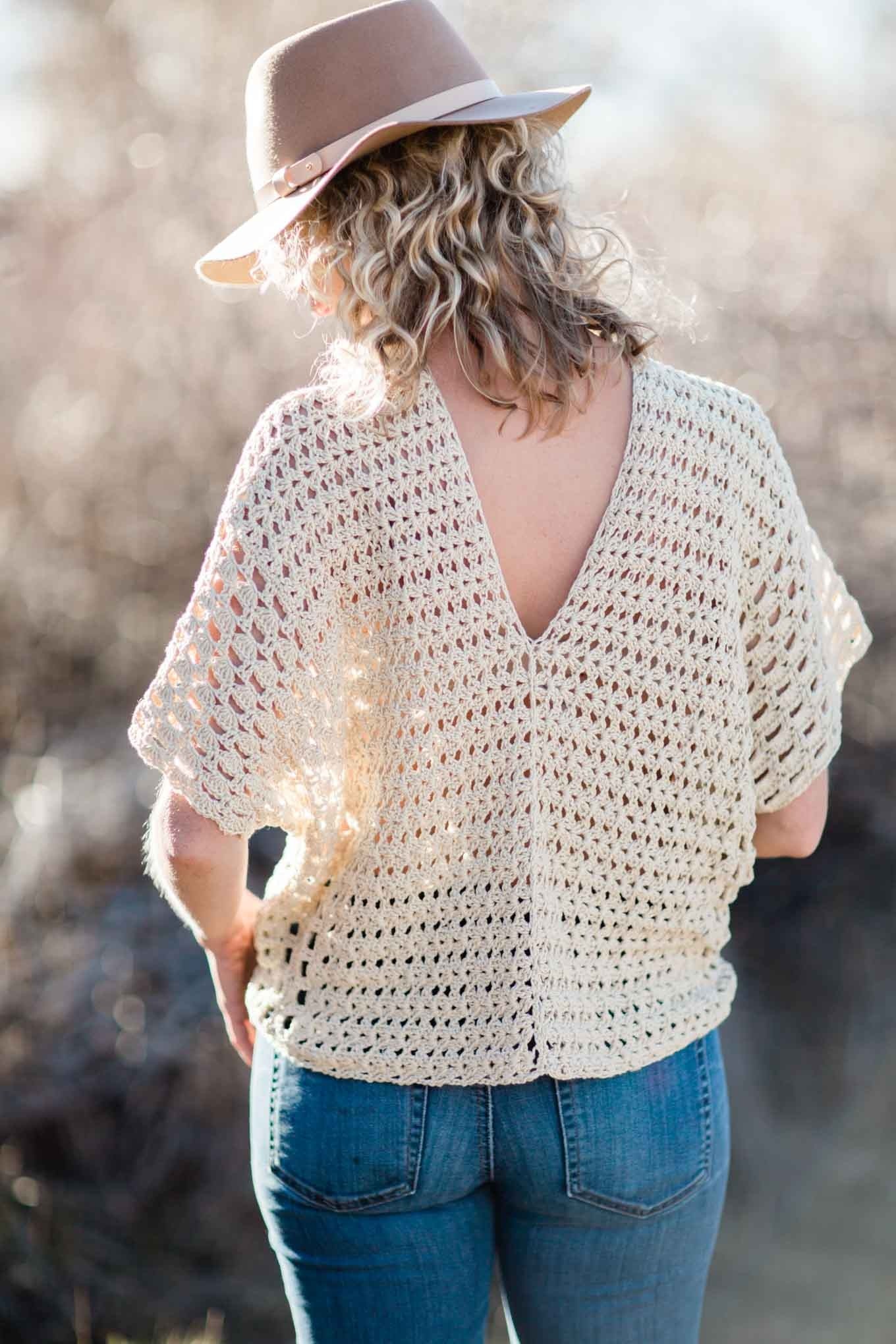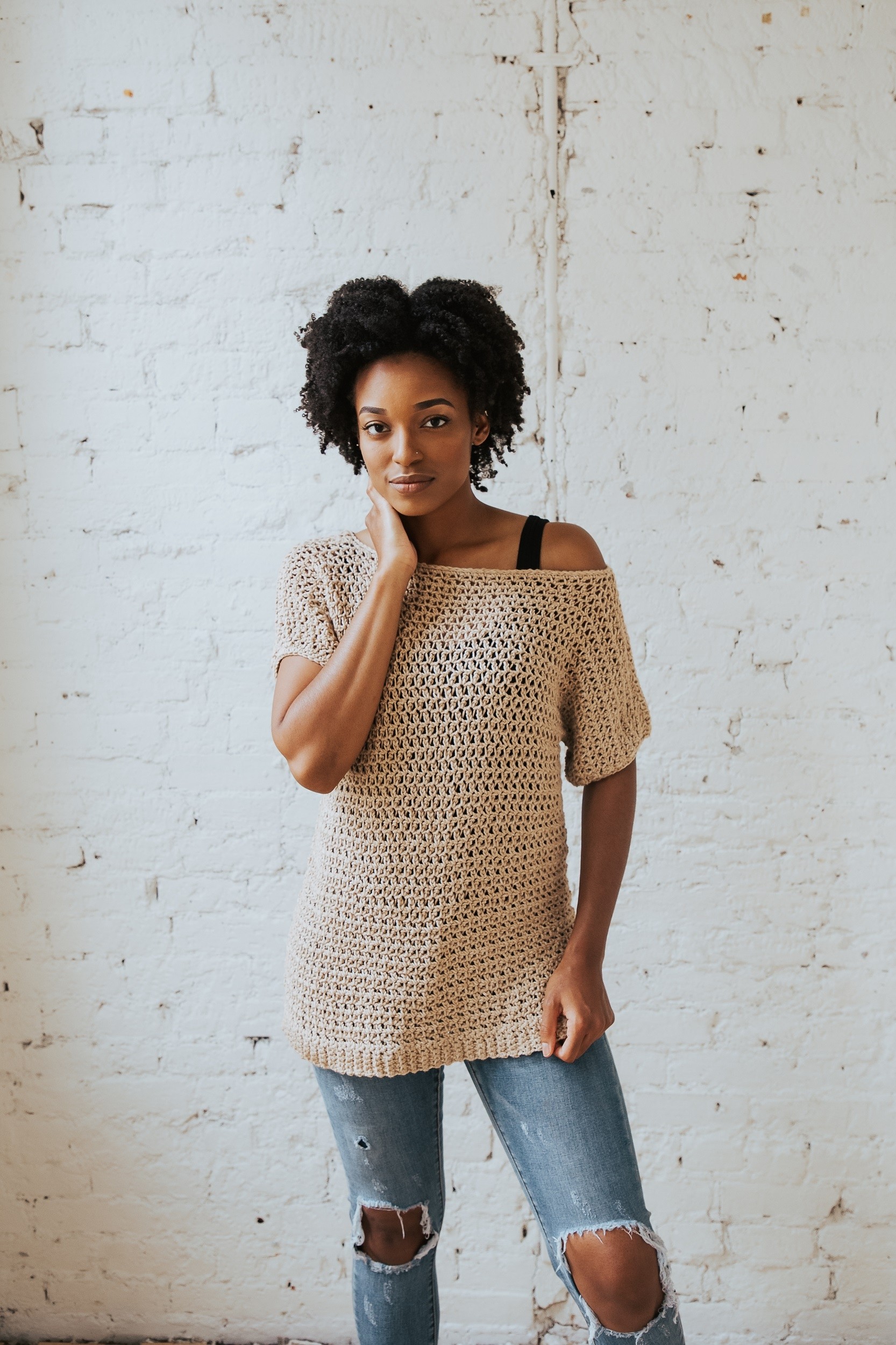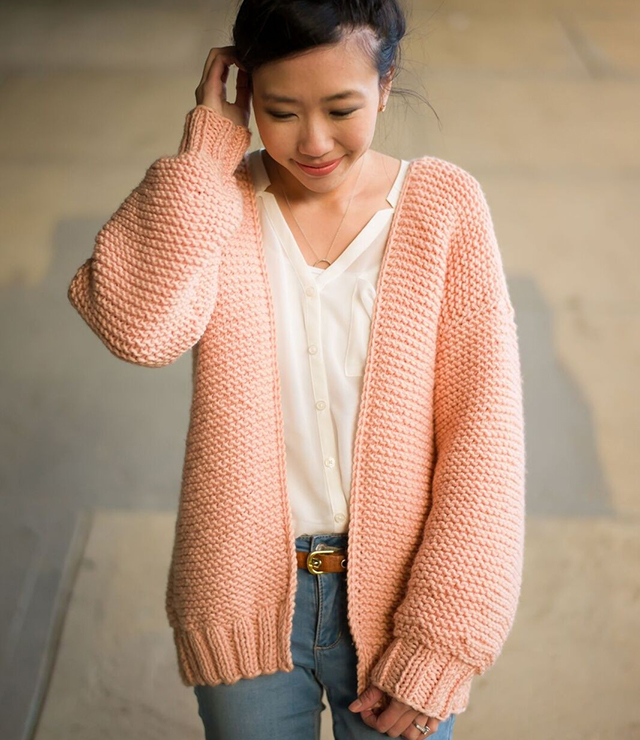I’ve been knitting for around 15 years and can execute complex lace and design intricate cable patterns, but getting the correct amount of ease in my garments sometimes still eludes me.
First, what is ease? There’s a lot more on this below, but basically it’s the amount of inches more or less than your actual chest/bust size. Knowing this is necessary to then finding the right garment fit. Your measurements, ease, fit, and gauge are all pieces of a puzzle required to complete a garment that you’ll actually want to wear.
I very highly doubt that I’m alone in my dislike of measuring myself. It’s nearly as bad as stepping on a scale. However, if you want that garment you’re about to spend hours on to actual fit and be wearable then you’ll have to get real about measurements. (On the bright side, you get to keep these measurements to your self.)
I admit it, besides being in denial about my size, I can also be lazy. When you’ve got the yarn, hook/needles, and pattern all by your side who wants to take the extra time to go looking for a measuring tape? But do it. It’s worth it. And measure yourself every time you start a new garment project.
Once you know your measurements you’ll need to determine fit. This is how much “ease” (positive, negative, or none) you want your garment to have. “Ease” is the difference in the finished sweater measurement compared to your actual chest/bust size. A sweater has negative ease if the finished measurement is smaller than your actual size and positive ease if its larger than your actual size. No ease would be if the garment was exactly the same measurement as your chest/bust size.
Craft Yarn Council Standard Garment Fit
Very Close Fit: A very tight fitting garment may have negative ease. This means that the actual measurements of the finished sweater are approximately 2″ to 4” (5 to 10cm) less than your actual bust/chest measurement.
Close Fit: This fit has zero ease. The garment and your actual measurement are the same or very similar.
Standard “Classic” Fit: This is the most popular garment fit. It is slightly larger than your actual chest/bust measurements. Standard fit garments measure approximately 2″ to 4” (5 to 10cm) more than your actual bust/chest size.
Loose Fit: Loose fitting garments are slightly oversized. Finished garments will measure approximately 4″ to 6” (10 to 15cm) more than your actual bust/chest.
Oversized Fit: These garments are very loose and much larger than your actual size. Add 6+” (15+cm) to your actual bust/chest measurement.
Read more about standard measurements and sizing on the Craft Yarn Council’s website.
As if to make things even more confusing, sometimes patterns will list a finished chest/bust size and other times it will say “to fit chest/bust size…”
If you see the actual finished measurement listed than it is up to you to select a size that fits the way you’d like. For example, perhaps the pattern lists:
Finished Bust Sizes: 32 (36, 40, 44, 48, 52)”
If you have a size 38″ chest/bust then you can choose to make the 36″ size and have it be very close fitting (negative ease) or the 40″ size and end up with a classic fit.
If a pattern says “to fit chest/bust sizes” and then lists the inches these may not be the actual finished measurements of the garment. Here the designer is telling you that they considered the fit and ease already as part of the style of the garment and worked it into the listed sizes. Usually the pattern will tell you somewhere in the introduction if this is the case. Choose the size that is closest to your actual measurement.
If your gauge doesn’t match the guidelines given within the pattern than it won’t matter how much you consider fit and measurements, your garment still may not fit. And you also risk running short on yarn. Save the frustration, take the time to check your gauge!
I’m a loose knitter and I know it. Add to that the fact that knitting relaxes me and I have a recipe for growing gauge as I progress through my project. What I mean is, that as I knit and become more relaxed my stitches get looser and my gauge increases.
Some people might find the opposite true. If you pattern is complicated, or maybe something just has you stressed out, than your stitches could become tighter. So even if you’ve checked your gauge at the beginning of your project you might want to take a moment to measure and adjust as you go along.
Now that you have all the pieces required to get the fit you want, go forth and make your perfect sweater!




Barbara
Thanks for this information – I too would like to skip it, but I once made a sweater by figuring, “I’m fat, so I’ll just pick the biggest size.” The result was a very oversized sweater. So I learned the importance of measuring and gauge the hard way.
carol baker
I had the same problem with the very first garment I knitted. A cardigan and I am 5 ft tall and was 140 lb at the time. I gave the sweater to my roommate who was 5 ft 10 in and 200 lbs and it fit her perfectly. She loved it and wore it for many years. Still have lots of trouble making things fit. Sleeves are usually way too long and I also have lots of trouble assembling garments so I decided I did not really like to knit just like to buy yarn. Back to knitting now but just do shawls and scarves etc. Never had any lessons or help just learned from a book but I am retired now and still have goofs that do not turn out as expected but keep trying.